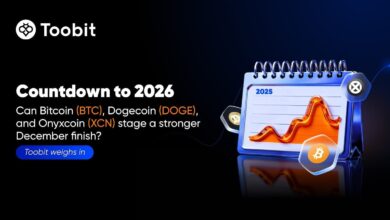Unlocking the Power of Speed in Crypto Investing

Introduction
In August 2020, Michael Saylor, co-founder and executive chairman of MicroStrategy, took Wall Street by surprise when he made an aggressive move, allocating $100 million into Bitcoin within mere hours. While skeptics labeled the decision as hasty or impulsive, many in the cryptocurrency space recognized it as a bold and calculated strategy. This event not only marked a turning point for enterprise investment in digital assets, but also highlighted a crucial characteristic for success in the crypto market: agility. In a space driven by unpredictability, agility often trumps traditional due diligence. The ability to act decisively and with speed can define whether an investor capitalizes on transformative opportunities—or watches them slip away.
The Importance of Speed in Crypto Investing
Cryptocurrency markets operate on a different time axis compared to traditional financial markets. Whereas equity investors may observe gradual gains or losses over the span of weeks or months, crypto traders experience similar volatility in just hours—or even minutes. This high-speed environment places a premium on response time, not just analysis. Speed often trumps precision because over-deliberation can lead to paralysis, resulting in missed entry points or suboptimal exits.
Successful crypto investors understand that while technical analysis is invaluable, markets do not wait for full consensus. Saylor’s fast capital deployment signified more than just belief—it showed strategic awareness of how quickly opportunities emerge and vanish in the crypto realm. Having a directional view is important, but having the tools and conviction to act on that view instantly is even more critical.
Whether it’s capitalizing on a price correction, entering a bullish breakout, or reacting to macro news, decision-making speed directly correlates with profit potential. In crypto investing, there is a saying: “If you’re slow, you’re late.” This mindset echoes the necessity of being proactive instead of reactive.
Crypto vs. Traditional Investing
Institutional investing in traditional finance typically involves multiple stages: proposal drafting, risk committee reviews, board approvals, custodial clearances, and then gradual capital deployment. These layers of bureaucracy make sense in heavily regulated systems seeking to preserve capital. However, in the fast-paced world of crypto, these procedures often obstruct opportunity.
Bitcoin’s historical boom-and-bust cycles demonstrate how quickly market sentiment and price can shift. During bull markets, assets can double or triple in value over a weekend. Consider past Bitcoin bull market cycles: the greatest returns often favored those who acted early, not those waiting for confirmation from traditional investment banks or official news outlets.
Michael Saylor bypassed these legacy frictions by leveraging his authority within MicroStrategy, rapidly reallocating capital using digital-first tools and an aggressive conviction-based strategy. His move demonstrated not only the power of independent decision-making but also the advantages that technology offers in removing delays found in traditional finance contexts. For forward-thinking individuals and institutions alike, this is a clear signal that the future of wealth creation demands velocity and tech fluency.
Adopting Saylor’s Mindset for Financial Growth
One of the key takeaways from Saylor’s Bitcoin bet is the mindset shift required to thrive in the new digital economy. More than simply converting fiat assets into BTC, he embraced the principle of capital velocity. Instead of letting cash remain idle—eroded over time by inflation—he directed it into an asset that he believed would store and compound value more effectively.
This approach, while unconventional in traditional finance circles, aligns perfectly with the outlook of modern crypto enthusiasts. They don’t just invest; they optimize the deployment of capital to seek compounding growth across fast-expanding ecosystems. You don’t need to command billions to apply this principle. Smart crypto investors routinely watch macro trends, evaluate on-chain analytics, and maintain high liquidity in stablecoins or fiat to respond rapidly.
One effective approach used by crypto-native investors today is called activation readiness. This means continuously preparing to enter the market the moment technical, on-chain, or macroeconomic indicators align. Having funds spread across multiple exchanges, wallets, or DeFi platforms enhances your flexibility, ensuring you’re never locked out of a sudden buy or sell opportunity.
Whereas traditional investors might wait for consultants, quarterly forecasts, or high-profile commentary before deploying capital, successful crypto investors often act preemptively. They place smaller, strategic bets in emerging coins, technologies, or Layer 2 ecosystems before the broader public takes notice.
Risk Management in Rapid Markets
Operating with speed doesn’t mean abandoning caution. While Saylor invested with sizable capital, his thesis was backed by rigorous research and a deep understanding of Bitcoin’s fundamentals. It’s critical for everyday investors to strike a balance between urgent action and strategic risk control.
Implementing solid risk management frameworks is a must. This includes defining your entry and exit points, setting take-profit and stop-loss orders, and having a clear investment thesis prior to each trade. Automated trading tools and smart contracts can help enforce discipline, especially when emotions like fear or greed threaten to override rational judgment.
Another key practice is sizing investments relative to risk tolerance. No matter how convincing an opportunity seems, over-concentration can be dangerous. A diversified portfolio reduces your exposure to the volatility characteristic of single-token investments.
Saylor himself wasn’t betting on a quick return—his approach has always been backed by long-term conviction. Regardless of short-term price movements, he viewed Bitcoin as “digital energy,” believing it would preserve purchasing power over decades. Investors should similarly identify whether they’re trading for short-term profits or investing for the long game, and adjust strategies accordingly.
To further develop your exit planning strategies, consider studying this guide on selling Bitcoin effectively. Defining parameters for exiting your position—winning or losing—is just as important as identifying when to enter.
Putting Speed into Practice
The best way to capitalize on the speed advantage in crypto is by operationalizing it. That starts with practical preparation. Keeping a portion of your portfolio in stablecoins or fiat enables instant deployment into trades or staking opportunities. Being tethered to banking hours or slow transaction systems creates friction that can delay critical decisions.
Next, leverage platforms and tools that allow seamless execution. Trusted centralized exchanges (CEXs), decentralized finance (DeFi) platforms, and non-custodial wallets give you different ways to act quickly, each with their distinct advantages. For instance, DeFi users benefit from 24/7 liquidity and permissionless access, while CEX users enjoy high-speed execution and deep order books.
Study on-chain data to identify accumulation or distribution phases. Monitoring wallet activity, exchange inflows/outflows, and gas fees can provide deeper insights into market behavior. Becoming proficient in reading these indicators allows you to move ahead of headline-chasers who react only after news breaks.
Also, understand that macroeconomic events frequently trigger sharp moves in digital assets. Announcements around inflation, interest rates, or policy shifts from entities like the Federal Reserve often have near-immediate ripple effects on crypto markets. By staying plugged into these updates and having predefined action plans, you gain a measurable edge.
If you’re using technical analysis, it’s equally important to be confident in your charting abilities. Tools like RSI, MACD, and Fib retracements are only useful if you couple them with immediate trade execution methods. Planning the move is only half the battle—being in position to act on it completes the edge.
For further directional insights, it’s helpful to review forward-looking analytics like Bitcoin price predictions. However, while forecasts help you align with macro trends, true success lies in moment-to-moment responsiveness.
Conclusion
Michael Saylor’s massive Bitcoin purchase wasn’t just a corporate investment—it was an ideological commitment to transformation through speed, strategy, and technology. While you may not control vast corporate treasuries, you do have control over preparation, mindset, and decisiveness.
In crypto, speed is not recklessness—it’s readiness. The velocity at which you interpret, adapt, and execute defines your potential for success. Armed with data, a solid thesis, and modern trading infrastructure, any investor can learn to act in rhythm with market movement rather than against it.
So don’t wait for permission or confirmation from outdated systems. Prepare for volatility, embrace decisiveness, and cultivate agility. Because in the constantly accelerating world of digital assets, speed isn’t just an advantage—it’s your edge.
Source link





